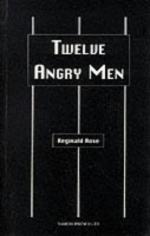
|
| Name: _________________________ | Period: ___________________ |
This test consists of 5 multiple choice questions, 5 short answer questions, and 10 short essay questions.
Multiple Choice Questions
1. After the knife discussion, how do the other jurors pressure the dissenting juror to make him change his vote?
(a) They suggest that he is not intelligent enough to understand the evidence.
(b) They suggest that he is on the side of law breakers.
(c) They suggest that he is inferior because he is from the ghetto.
(d) They say he is the only one and they will return a "hung jury" verdict.
2. How does the dissenting juror discredit the allegation that the murder weapon is unique?
(a) He reads an article stating that there are hundreds of similar weapons for sale in the community.
(b) He says he has used a similar weapon for hunting.
(c) He presents an identical weapon taken from his own pocket.
(d) He shows pictures of several similar weapons.
3. How does the dissenting juror explain the defendant's record of violence?
(a) He says the defendant has been wayward because of bad company.
(b) He says the defendant was left by his mother as a child.
(c) He says the defendant has an abusive father who has beaten him since he was a young boy.
(d) He says the defendant has been conditioned this way by living in the ghetto.
4. Who jams the murder weapon into the wall?
(a) Juror four.
(b) The foreman.
(c) Juror Eight.
(d) Juror Nine.
5. Why do the jurors take a vote before discussing the evidence?
(a) The judge instructs them to do so.
(b) The verdict is obvious.
(c) To get an early indication of where they stand on the verdict
(d) So they can leave quickly.
Short Answer Questions
1. Before the jurors depart for the jury room, who gives them final instructions?
2. How does the dissenting juror feel about the job done by the lawyer for the defendant?
3. What is the reaction of the jury when the dissenting juror discredits the allegation that the weapon is unique?
4. What important information casts doubts on the eyewitness' story in the first discussion of the evidence?
5. What sentence must the defendant face if proven guilty?
Short Essay Questions
1. What information do the jurors share about the defendant in the beginning of their discussion?
2. What additional suggestion does Juror Four make in Act I to support his assertion that the defendant is guilty?
3. What assumptions do the jurors make about Juror Eight's vote, and how do they decide to respond?
4. What is Juror Ten's contribution to the discussion of the evidence?
5. What information does Juror Three present in an attempt to draw the jurors' attention to the "facts of the case"?
6. What is the defendant's alibi and how does Juror Four respond to it?
7. What is Juror Eight's response to the declaration of Juror Sevel about the defendant's criminal record?
8. How do the jurors respond to the defendant's explanation of his purchase of the knife and the fact that he cannot produce it?
9. How does Juror Eight respond to the evidence that Juror Three presents about the knife, and what dramatic turn of events does this cause?
10. What important instructions does the judge give to the jurors as they depart to deliberate on the case?
|
This section contains 1,297 words (approx. 5 pages at 300 words per page) |

|




